Article: From Bees to Beauty: The Ancient Art of Lost-Wax Casting and the Soul of Hand-Carved Jewellery
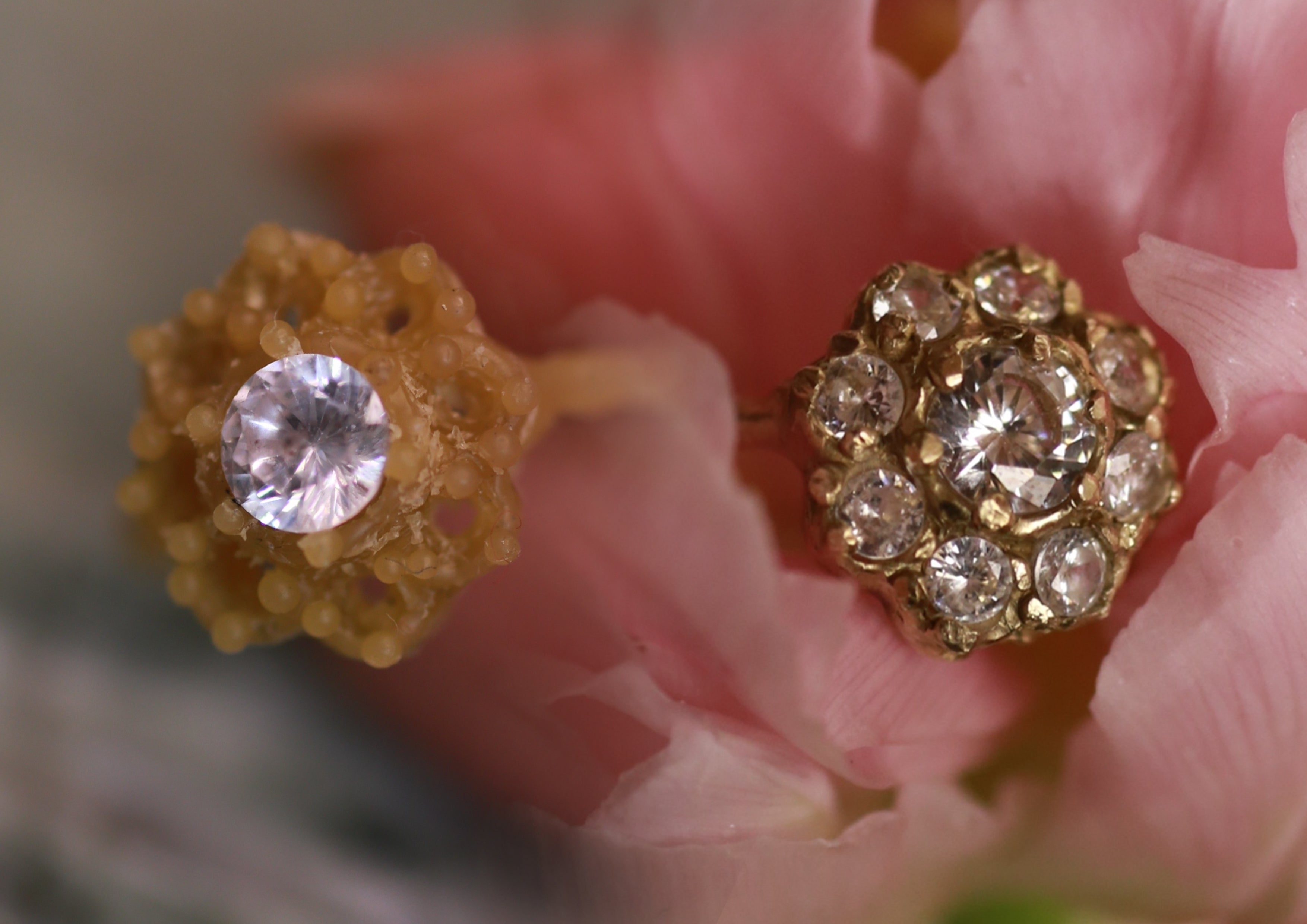
From Bees to Beauty: The Ancient Art of Lost-Wax Casting and the Soul of Hand-Carved Jewellery
🐝 The Dance Between Bees and Beauty
There’s a quiet magic in the way bees move through the world - shaping, sculpting, and creating as they go. Their wax is one of nature’s purest materials, born from devotion, community, and transformation.
For me, that wax becomes something more than material. It becomes a language. Each curve I carve, each texture I press into the wax, is a word in an ancient conversation between maker, nature, and time.
This is where Wax and Words begins - at the meeting point between bees, human hands, and a 6,000-year-old technique known as lost-wax casting.

🔥 The Ancient Art of Lost-Wax Casting
Long before modern jewellery workshops, artisans from Mesopotamia and Ancient Egypt shaped molten metal into sacred adornments using a process called lost-wax casting.
In its simplest form, the method hasn’t changed for thousands of years:
-
The artist carves a design from wax.
-
The wax is encased in clay or plaster to form a mould.
-
The mould is heated - the wax melts and “is lost.”
-
Molten metal is poured into the empty cavity, taking the wax’s place.
The result? A perfect transformation. The wax disappears, but its impression lives forever in metal - a lasting echo of the artist’s touch.
It’s a process that marries destruction and creation, fragility and permanence. And every time I practice it, I’m reminded that nothing truly beautiful ever comes without transformation.
If you want more detailed information on the lost wax casting process, download my free guide

🍯 Carving in Beeswax - Where Nature Meets Craft
I don’t use synthetic wax. I carve in pure beeswax, gifted by the same creatures who pollinate the flowers that inspire my designs.
Beeswax has a life of its own - it softens with warmth, holds the memory of fingerprints, and carries a faint golden scent of honey. As I carve, I feel like I’m collaborating with nature itself.
The bees begin the work, and I continue it - shaping the wax into forms that echo the world they helped build: petals, honeycomb patterns, organic textures, flowing lines.
Each piece begins as a small, glowing sculpture - fleeting, delicate, and alive - before it transforms through fire into metal.

🕯️ Why Ancient Techniques Still Matter
In a world of mass production and instant gratification, ancient craftsmanship offers something radical: time.
Each step of the lost-wax process is slow and intentional. There are no shortcuts - only patience, presence, and respect for material.
These methods matter because they connect us to our roots - to a time when making was sacred, and jewellery wasn’t just decoration but a symbol of identity, love, and continuity.
When you wear a piece made through lost-wax casting, you’re wearing a story shaped by both nature and human hands — one that bridges the past and the present.

🔥 From Fire to Form - The Transformation
When the carved wax is ready, I encase it in plaster and heat it until the wax melts away. It’s a bittersweet moment - watching something so fragile vanish into flame.
Then comes the rebirth: molten silver or gold fills the empty space where the wax once was. As the metal cools and the mould breaks open, the form reappears - transformed, enduring, radiant.
Every detail of the beeswax carving remains, captured forever in metal. It’s as if the wax’s spirit has found a new home.

🌸 A Return to the Bees
The process always ends where it began - with gratitude to the bees.
Their wax makes my work possible. Their patterns inspire my designs. Their quiet diligence reminds me to move slowly, create intentionally, and honour the world we share.
When you wear one of my pieces, you’re wearing more than jewellery. You’re wearing the story of a bee, a flame, and a moment suspended in time.

✨ Explore the Collection
If you’d like to wear a story shaped by bees, fire, and time, explore my
Aurea Flora Collection — where every piece begins in wax and ends in beauty.

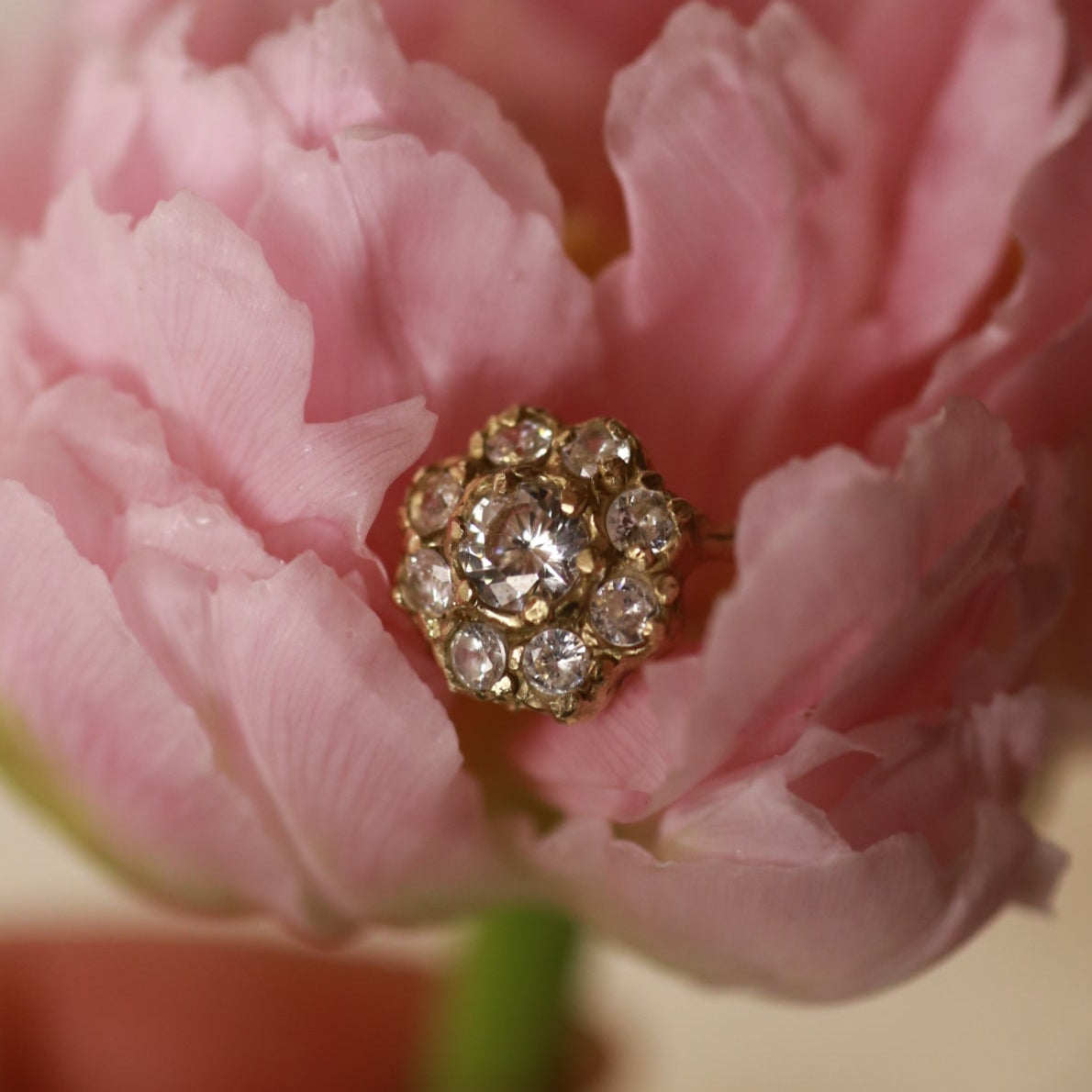
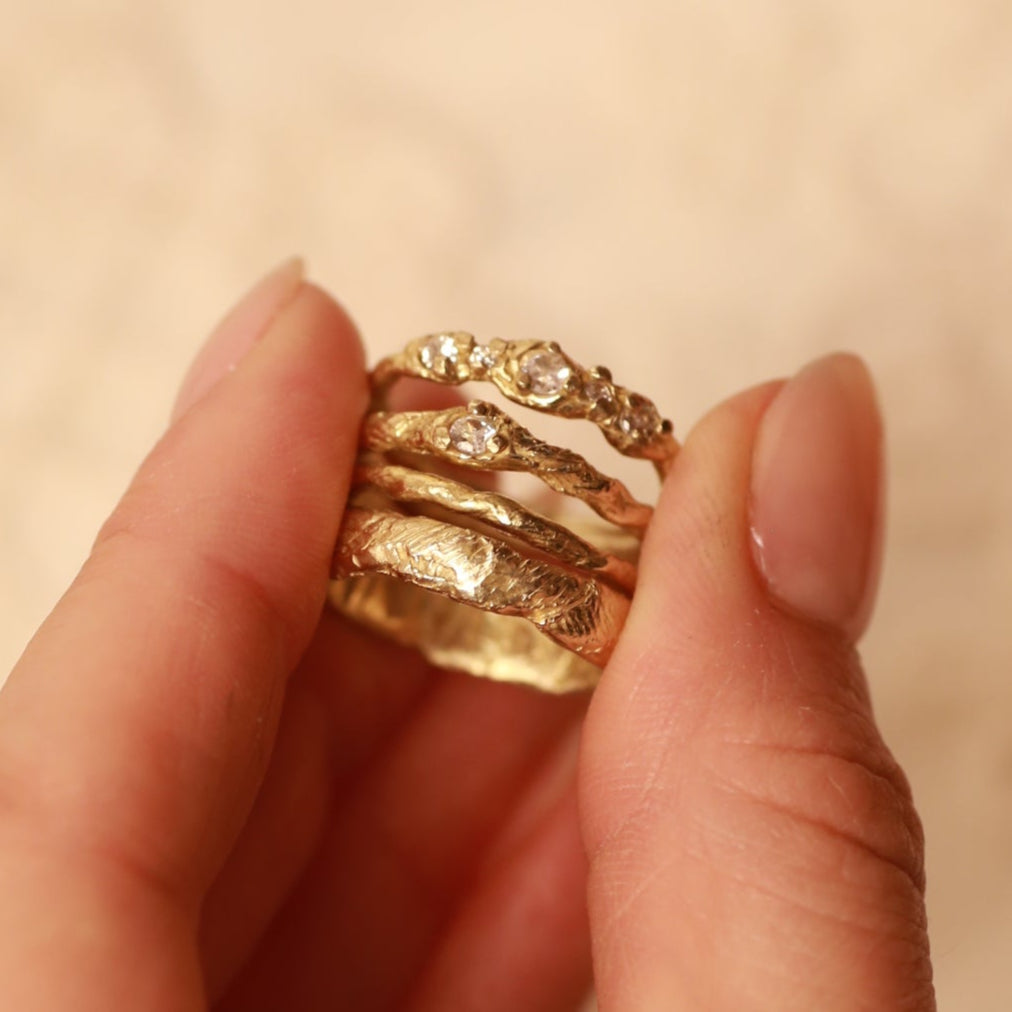
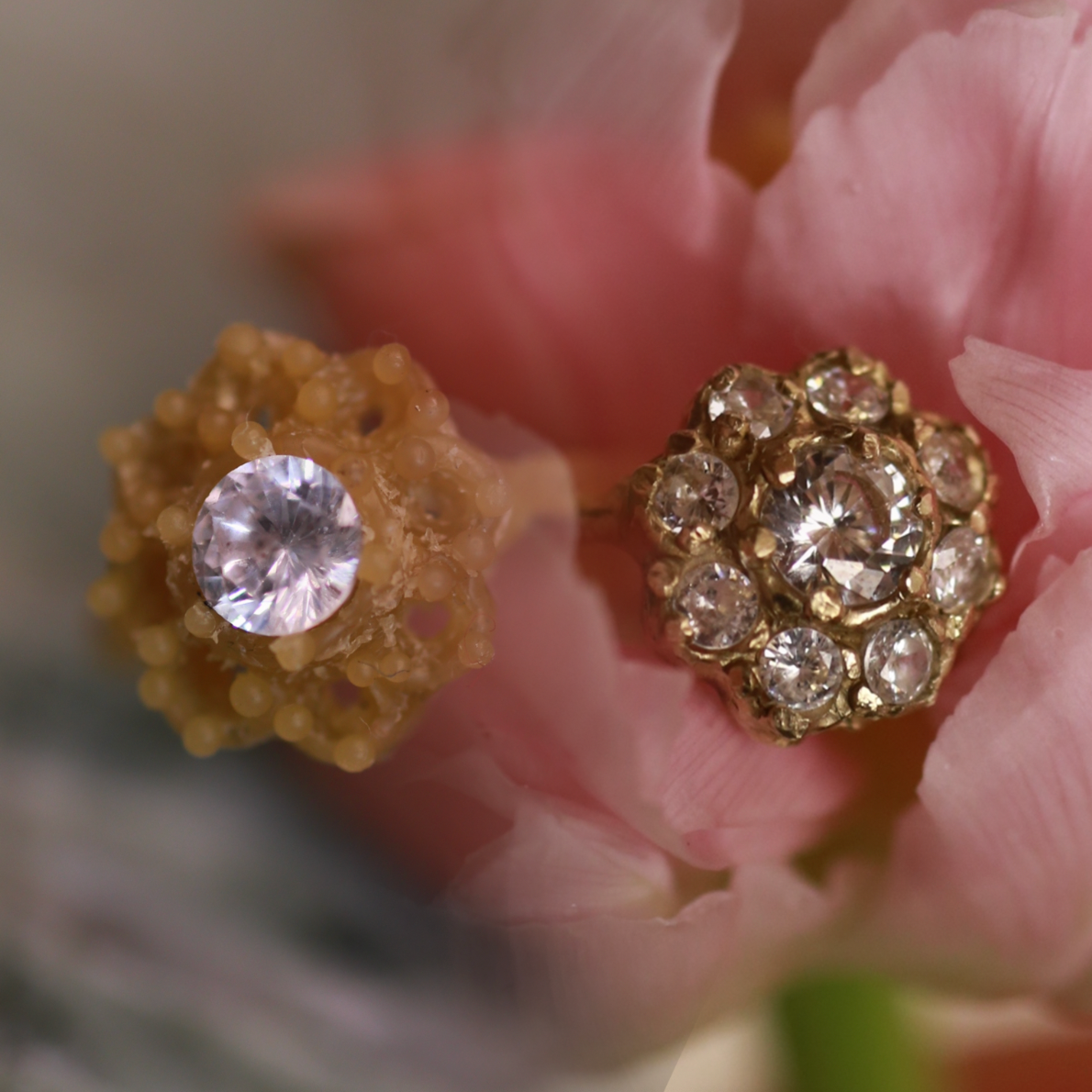
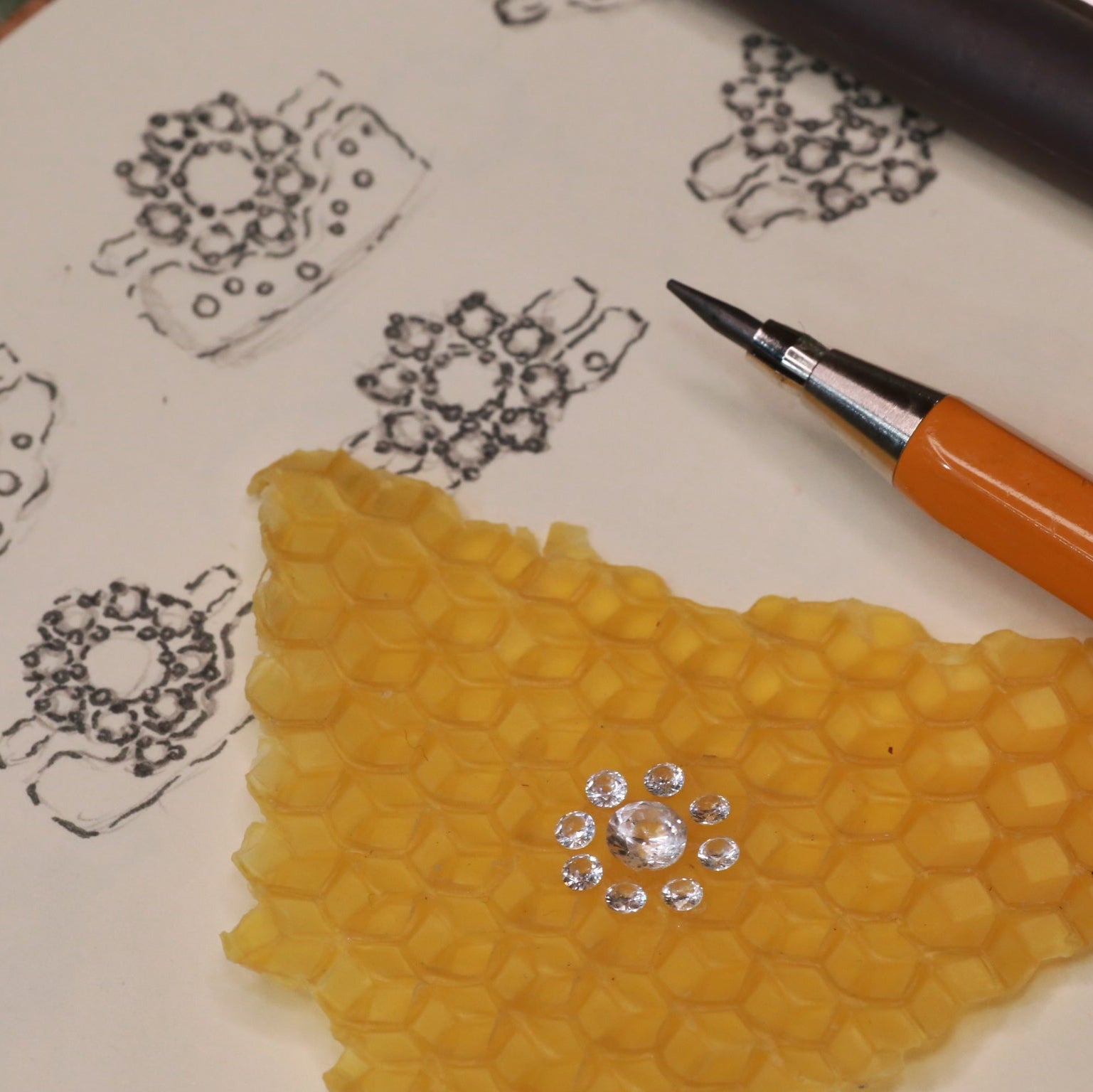


Leave a comment
This site is protected by hCaptcha and the hCaptcha Privacy Policy and Terms of Service apply.